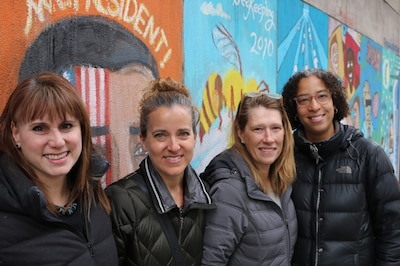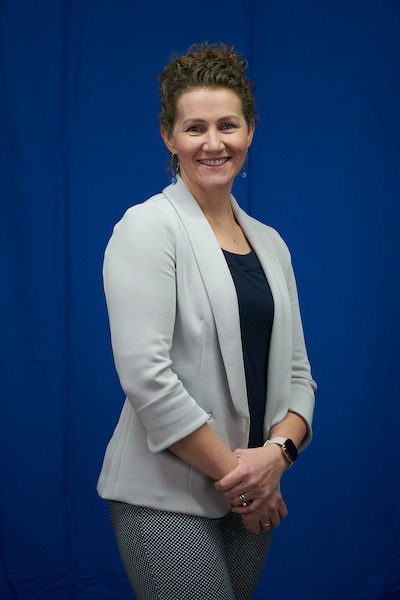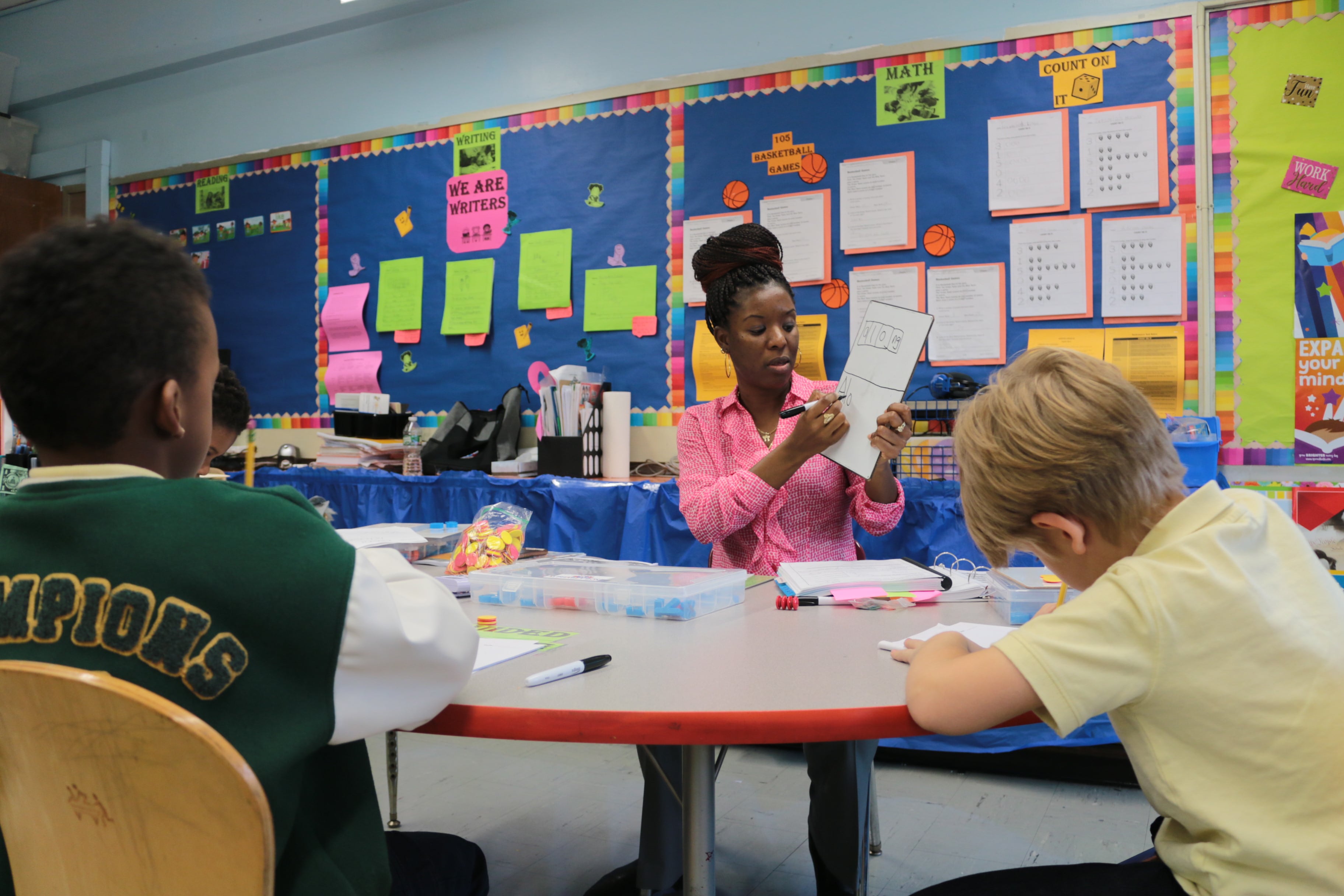In September, New York City’s education department plans to open the city’s first traditional public school exclusively devoted to students with dyslexia and other reading issues.
The new school, called South Bronx Literacy Academy, is the culmination of years of advocacy from a handful of parent advocates who watched their own children flounder without adequate reading instruction and argued the city does not have a systematic approach to reading instruction.
Their goal was to coax the city to build classrooms similar to what’s offered at private programs, like The Windward School, which specialize in intensive literacy instruction but are often out of reach for families without the time or resources to secure private tuition reimbursement from the city.

The group helped persuade the city to launch a pilot program this school year to test out a version of the model in an existing public school, P.S. 161. And they even started their own nonprofit, the Literacy Academy Collective, which has helped support the effort.
Now, pending likely approval from the city’s Panel for Educational Policy on April 19, the city is planning to transform the pilot program into a fully-fledged school (a charter school on Staten Island has a similar mission).
Chalkbeat recently caught up with South Bronx Literacy Academy’s inaugural principal, Bethany Poolman, to learn more about her vision, how the school plans to serve students who are behind in reading, and why the city wants to create a school specifically for students with literacy challenges.
The following interview has been edited for length and clarity.
Tell us just a little bit about yourself. How did you get interested in leading a school geared toward serving students with reading challenges?
Yeah, so I’ve been with the DOE for 18 years. I taught in District 9 in the Bronx for 10 years at a middle school [as a] special education teacher. I had a lot of students who really struggled to read who were really behind grade level. I was Wilson trained [a more structured approach to literacy instruction], I applied for an outside grant at one point. I received like $15,000 from a company and I started a breakfast club program. And I was essentially doing structured literacy practices before they were termed structured literacy.

I had kids coming in before school doing these [Orton-Gillingham] practices [a structured approach to literacy instruction], looking at breaking apart words, word cards, pseudo word reading and things like nonsense words. I really was interested in helping kids that were unable to read or really far behind grade level to catch up to become proficient readers.
And then fast forward. I was an assistant principal in the South Bronx in District 7 for seven years. I had the opportunity to learn and grow the admin side of the work. And when this opportunity presented itself in District 7, that I know and love, it was just an awesome opportunity.
Tell me a little bit about this particular school’s design. What makes it different from a traditional elementary school? I know, for instance it’s starting with students in second and third grade.
What we’re doing is we’re taking what in other schools are tier two and tier three intervention practices. When I say that, I’m talking about students who [struggle] get pulled out or get put into small groups and they receive additional supports, additional services to help them close the gap. And we’re taking those practices that are in other schools often in tier two and tier three, and we are making them part of our tier one model. So tier one being instruction that everybody receives.
So, in terms of foundational reading skills and what we know works in terms of the science of reading, we are ensuring that kids have at least 90 minutes a day of foundational skills as their tier one literacy instruction.
In addition to that we’re also bringing social emotional skills and strategies and executive functioning strategies — thinking about things like time management, organization, prioritization, skills that children need in order to access the information in order to tap into their learning, and so we’re bringing those as well to tier one.
In terms of how you achieve that more intensive kind of small group model for all students — what does that take?
There are some points we’re still working out with the Department of Ed, but all of our classrooms are ICT [Integrated Co-Teaching] classrooms. So all classrooms will have two teachers. Budgeting modifications are still being worked out. But we’re looking to have speech and language pathologists and occupational therapists next year. Instead of our speech and language pathologist working in isolation down the hall in their office pulling children out, they’ll be pushing in as the integrated language teacher within the classroom.
Is there a specific curriculum you all plan to use for reading instruction?
I think we’re still working with the Department of Ed to make final decisions on our curriculum. We are partnered with the Literacy Academy Collective and The Windward School and they are using PAF [a curriculum also known as Preventing Academic Failure]. So we are planning to continue our work with PAF, which is an Orton-Gillingham based program.
What’s the goal of launching a school specifically designed for students who struggle with reading? Is it mostly just about the 60 to 80 students who are projected to enroll next year or is there a broader goal here in terms of sharing practices with other schools?
The truth is that all kids deserve to learn to read. We do believe that is a civil right and so we want to ensure that our children are given the tools to be successful and to become proficient readers. I think there are many initiatives that are being performed by the Department of Ed right now to address that.
And I think, you know, there’s a lot of great things happening across the whole city. I think we are unique because we are the first standalone district public school [devoted to students who are struggling readers]. We are really a school that is designed for students who have been struggling and have been struggling for a while, right. So kids that may have been in an intervention pull out model, and just need more, and who need more intense support. We’re working in partnership with everything that’s already happening across the DOE, and we’re just serving a specific population that may need more.
To be admitted to South Bronx Literacy Academy, “a student must either present formal documentation of dyslexia, or demonstrate a pattern of reading challenges consistent with dyslexia through an assessment process conducted by the DOE.” Given that it can be time consuming and expensive to get a dyslexia diagnosis, and many parents of young children may not know that their children are struggling readers, how will you ensure that the school won’t end up serving families who have resources and know how to navigate those systems?
The Department of Ed specifically placed this school in the Bronx, right in the South Bronx in District 7. It’s an effort to ensure that students [who] may not have access to all the same resources as other students get first dibs, if you will, at this opportunity.
We don’t expect many students to have that formal diagnosis. We are creating an additional resource for students that need additional support that’s not District 75 [a specialized group of schools that serve students with more complex disabilities].
Given that second and third grade aren’t super common entry points, how are you imagining students getting funneled to the school?
Parents will choose this option. No one is funneling children anywhere. Parents choose if this is an appropriate place where they would like to apply for their child to be first and foremost. We are trying to make sure that we spread the word and I think it will take time. I think families will trust us more once we’re established, and we have a proven track record of success. We are trying to spread the word and make sure both internally in the DOE and externally with families that we’re an option for them.
Will the school have specific set asides for students with disabilities or low-income families or anything like that?
So priority is given to students residing in the Bronx. So anyone within the city can apply but priority is given to any student with again, we’re an ICT-based model. So all of our classrooms are inclusion, co-taught classrooms, so we will have seats for both students with IEPs and students without IEPs [individualized education program for students with disabilities].
Our class size is 18, so we [have] smaller class sizes to also ensure reading supports. And so, if our class size is 18, we can have no more than 11 [general education] students and no more than seven special education students. But we are looking to serve the families that want to support their children. [An education department spokesperson said 40% of the school’s students will have disabilities, but there are not specific targets for other student groups.]
A major premise of special education is that students with learning challenges should be in classrooms with typically developing students as much as possible, but it also seems like a premise of this school is that it is intended to be the case that 100% of the students there have reading challenges. I’m wondering how you’re thinking about inclusion in that context and why the school wasn’t set up to be more of a mix of students with reading challenges and students without reading challenges?
It’s important to understand it’s an iterative process. We have the pilot work this year. We’ve been really pleased with some of the progress monitoring growth that’s coming out of the pilot, It’s a new endeavor — we want to get back to the basics and back to some solid reading instruction for kids that need that.
Part of the hope is that by addressing some of these issues sooner — by pulling in the [general education], and giving them more intensive reading supports, we don’t need to mislabel children. We don’t need to say the only process, the only avenue, is for this child to get an IEP and to, you know, receive this traditional set of services. We can provide support and help them reach proficiency.
Is the goal to grow beyond second and third graders?
At scale, the school will be serving students in second to eighth grade. So we’ll start with second and third and then we’ll grow year over year and expand up to eighth grade. Schools like Windward they’re pretty clear: that they take students in, they’re putting out a fire, right? They teach them how to read and then they reenter them back into community or independent schools as quickly as possible.
I’m curious how you’re going about finding teachers and what kind of training you’re expecting your teachers to have?
The Literacy Academy Collective have been amazing partners in this work, and we didn’t really get to talk about that, but they, you know, they’re a nonprofit founded by parents of students with dyslexia. They really understand this teacher training piece. And so they have been working in partnership with DOE to ensure that over the summer, teachers work alongside Windward teachers and receive at least the initial training and support that’s required to get started in this.
Is it those teachers who are doing the pilot now who are going to be teachers at the [new] school?
It’s a new school, so everyone needs to apply. It has yet to be posted, so when it’s officially posted, any licensed teacher can apply.
Anything else you want to share?
I’m really excited for this work. I’m grateful that the DOE has given me this opportunity. I’m grateful that the [Literacy Academy Collective] is here, in partnership with the work, and I think we’re just gonna — bleep it out I don’t know — we’re gonna make a really kick ass school. It’s gonna be a great place for kids.
Alex Zimmerman is a reporter for Chalkbeat New York, covering NYC public schools. Contact Alex at azimmerman@chalkbeat.org.






